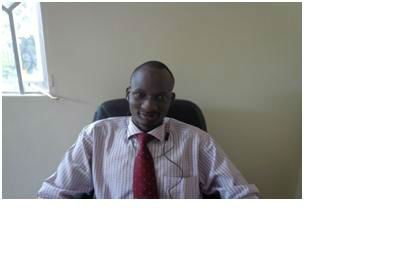
By Peter Gai Manyuon
October 29, 2019 (SSNA) — Many critics have criticized the 2018 peace agreement due to numerous factors that are foreseen ahead of the implementation process by the parties to the agreement. So far, many are identified as causes for the conflict in South Sudan, ranging from ethnic tensions, mismanagement of resources and the power struggle between Salva Kiir and Dr. Riek Machar.
It should be noted that, the peace deal of 2018 is an attempt to revive the agreement on the Resolution of the conflict in the Republic of South Sudan (ARCSS) of the 17th August 2015, which had apparently broken down as a result of the outbreak of the civil war triggered by the violent confrontations that erupted on the night of 7th July 2016 in Juba between forces of President Salva Kiir and forces of SPLM in opposition leader, Dr. Riek Machar. Furthermore, the R-ARCSS came in to force after five (5) agreements signed between the parties and stakeholders to the conflict in South Sudan.
- An agreement on the cessation of hostilities, protection of civilians and humanitarian access signed on 21 December 2017 in Addis-Ababa.
- Addendum to the agreement on the cessation of hostilities, protection of civilians and humanitarian access signed on the 22nd of May 2018 in Addis Ababa.
- The declaration of agreement between parties to the conflict in South Sudan signed on 27 June 2018 in Khartoum-Sudan.
- The agreement on outstanding issues of security agreements, signed on the 6th of July 2018 and the agreement on outstanding issues on governance, signed on 5 August 2018 in Khartoum-Sudan respectively.
- Based on the various agreements signed by the parties in 2015, 2017 and 2018 so far, nothing is achievable by the parties to the agreement. The failure of a previous peace deal of August 2015 is attributed to the inadequate security arrangements, lack of political will among the political elements. The failure of the 2018 peace deal will be attributed to political greediness, sectarianism states increment and lack of willingness of IGAD, AU and the international community to give parties to agreement proper pressure through the imposition of sanctions or political isolation.
The causes of political confusion in South Sudan among parties
The establishment of the tribal organization called the Jieng Council of Elders (JCE) is a major threat to peace and stability in the country. All the decisions by President Kiir go through scrutiny and evaluation by the tribal elders before announcement or implementation. It’s a very unfortunate situation where a whole country of 64 ethnicities, the government policies are determined by a tribal organization, not the parliament or judiciary.
In a separate note, the Sudan People Liberation Movement in Opposition (SPLM- IO) came with (21) controversial states where Dr. Machar is appointing Governors and Commissioners. On the other hand, after Kiir realizing the importance of States from his main rival Dr. Machar, he (Kiir) established more (32) controversial states which are the main focus as per now. The focus now is diverted to states, positions, and establishment of the SPLM government. Furthermore, the majority are basically focusing on the States whether, they should be (10) States, (21) states and (32) States not knowing that the issue of States wasn’t the cause of the ongoing crisis in the country.
We all know that the philosophy of the establishment of more states was brought in by individualistic politicians to divert the agenda or route cause of the massacred of the Nuer ethnicities in the capital Juba in 2013. The issue of states is a minor issue that should be resolved by the South Sudanese communities regardless of political manipulation, direction or what so over.
In fact, federalism, state establishment wasn’t the major cause of the crisis. Most of South Sudanese have digressed from the reality to a philosophy of deceiving and practicing politics of deception. Evidently, the crisis has changed from being ethnic’s genocide, ethnic cleansing to states, positions, political accommodation and daily business of getting allowances for the benefits of the top political elites in the Country.
It should be noted that the actual caused of the problem is only left to those whose relatives were killed in Juba in 2013 and the political elites only focusing on self-enrichment through an accumulation of wealth or big titles.
The fact is that Kiir and his group continuing with their states and Dr. Machar group having their governors in their States, which they established are problematic and a threat to peace in the country. Based on the practicality and simple evaluation of politicians in the Country, mediators were absolutely right to suggest the alternative referendum since the two main rivals (Salva and Riek) are not agreeing on the methodology to be used in determining the number of states and borders.
Therefore, it is appropriate now for a successful referendum to address the real issues that are obstacles to peace and stability in the Country. It’s up to each party to mobilize masses based on how many states we are going to have in the Republic of South Sudan. The alternative now is for the masses to decide what is good for them not politicians anymore. Where will intermediation or threats come from? Each and everyone will go to his or her village and vote for what he or she thinks is right for the betterment of our country. To my understanding of the text, there is no winner or loser as per the issue of the 32, 21 and 10 States are concerned. Sudan People Liberation Movement (SPLM) members both in the government and in opposition were after state establishment in the first place. Therefore, it should be the masses to get involved through a democratic process, not through political leaders who are blocking the interests of audiences in the Country.
Solutions:
- For South Sudanese to stay in peace and harmony, the (79) counties as recognized in the Comprehensive Peace Agreement (CPA) of 2005, referendum and Independence of The Republic of South Sudan as stipulated in The Transitional Constitution of 2011 should instead be States to avoid conflict of interests among the politicians. The former (79) Counties are having clear borders compare to these (21) states or (32) States of the warring parties in South Sudan. Accepting (79) Counties as States will avoid future disputes and confrontations among communities.
- The establishment of a hybrid court for South Sudan is the only way to isolate SPLM elements politically, socially, militarily and economically. They (SPLM) leaders with their fake generals have done too much exploitation on the lives and properties of people for many years.
Peter Gai Manyuon is an Independent Journalist, Human Rights activist and author who has written extensively on Human Rights and democracy in South Sudan. Former Reporter for the Citizen Newspaper and Television. Recently he published a research paper on academia.edu on Media Propaganda and conflict in South Sudan. Reachable on [email protected] or www.independentjournalistpgm.wordpress.com.

